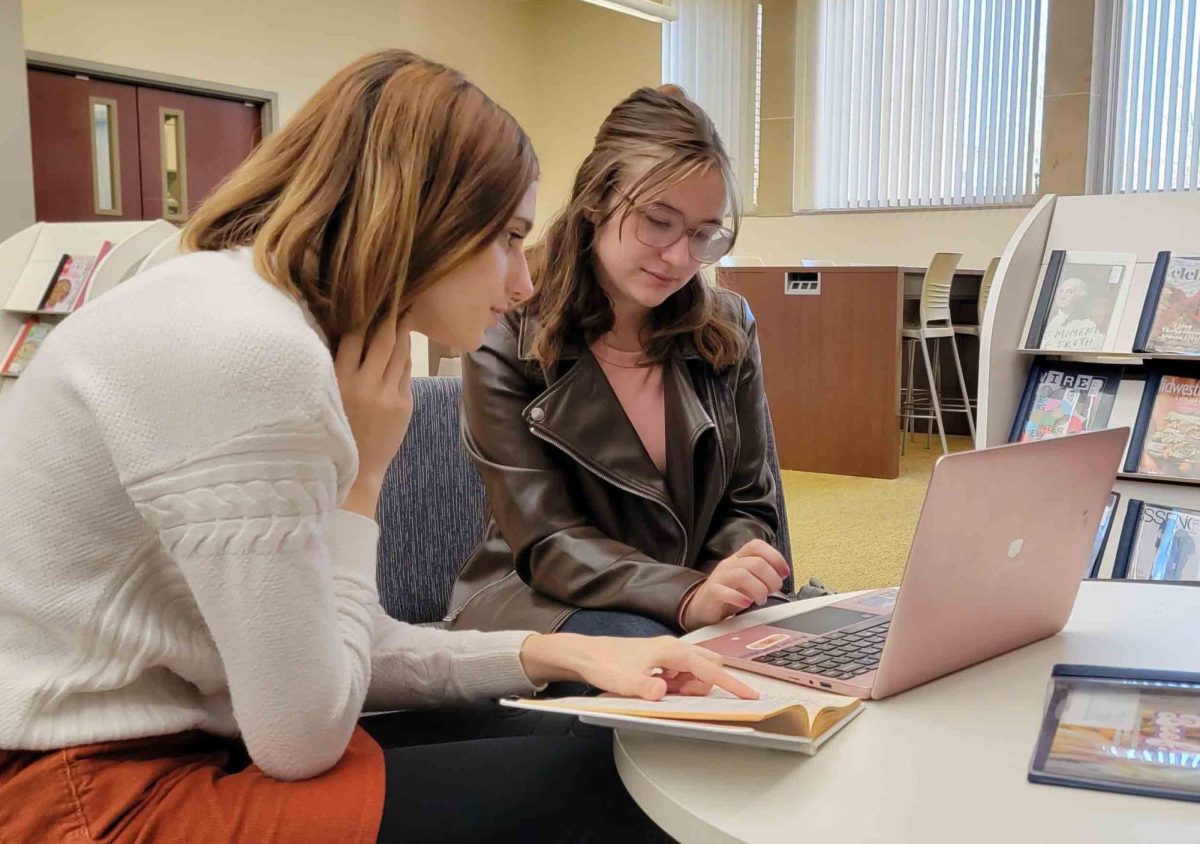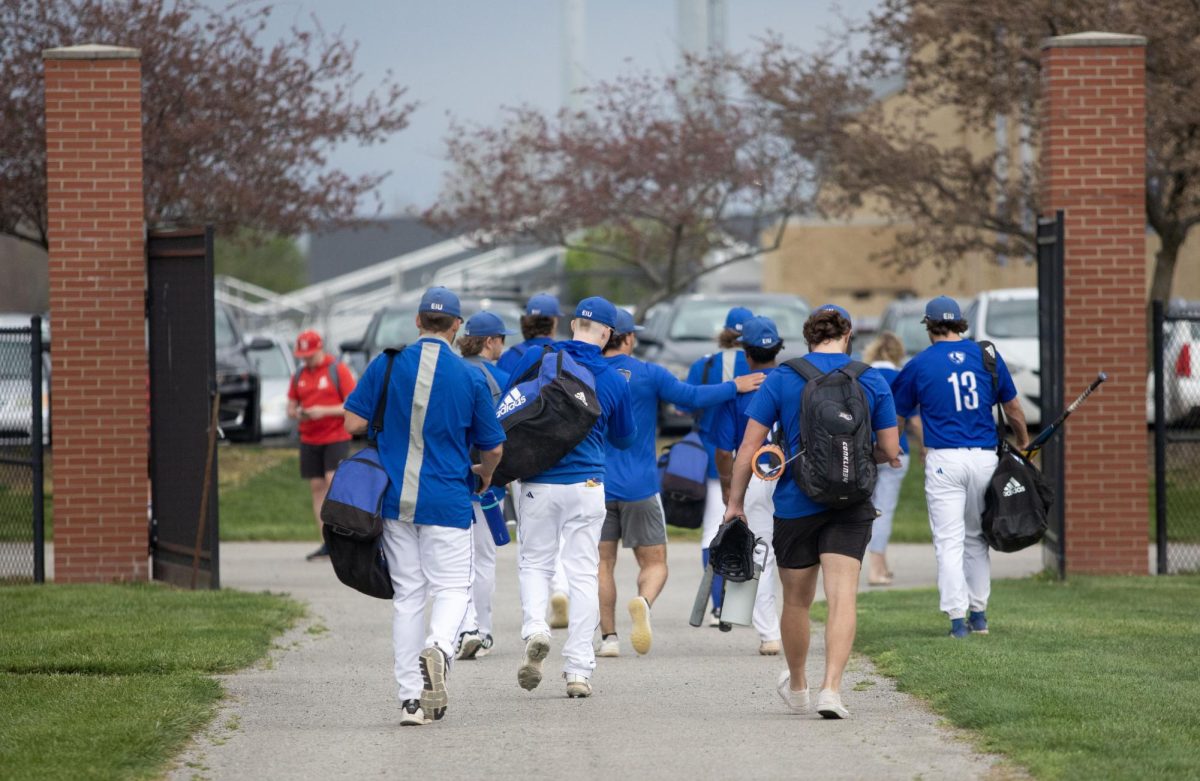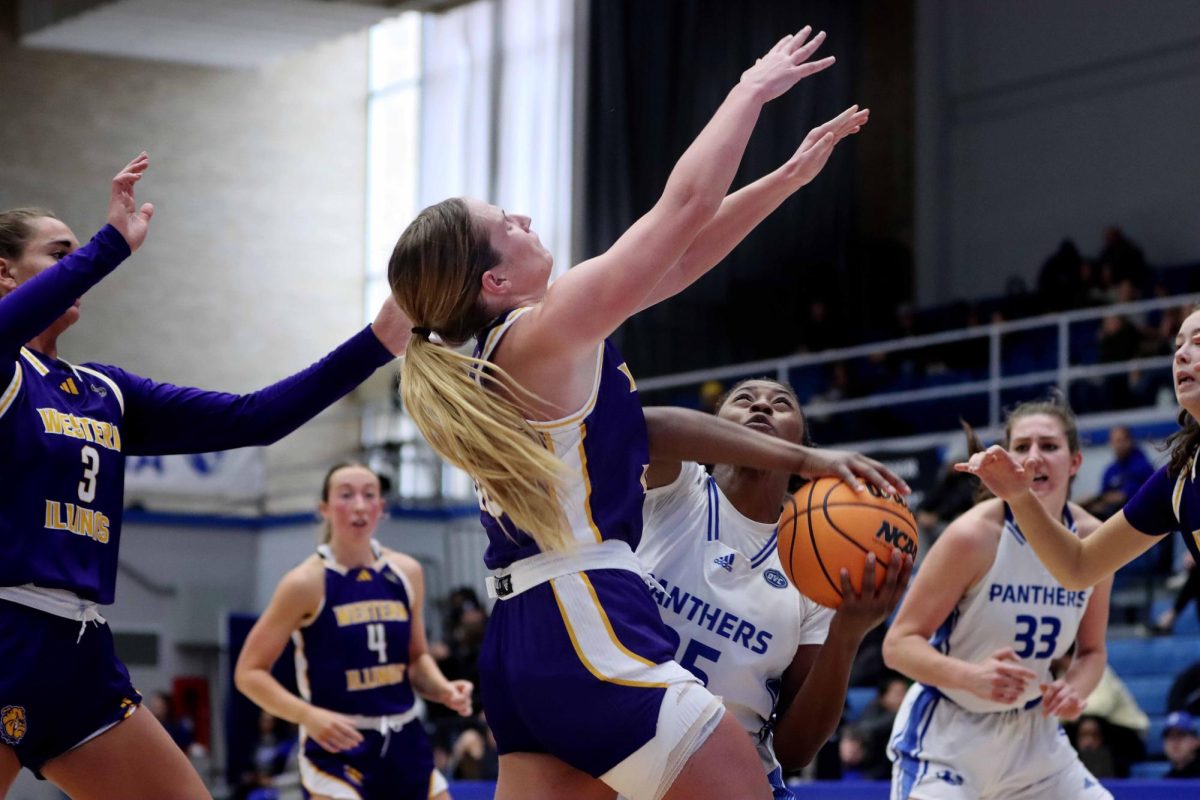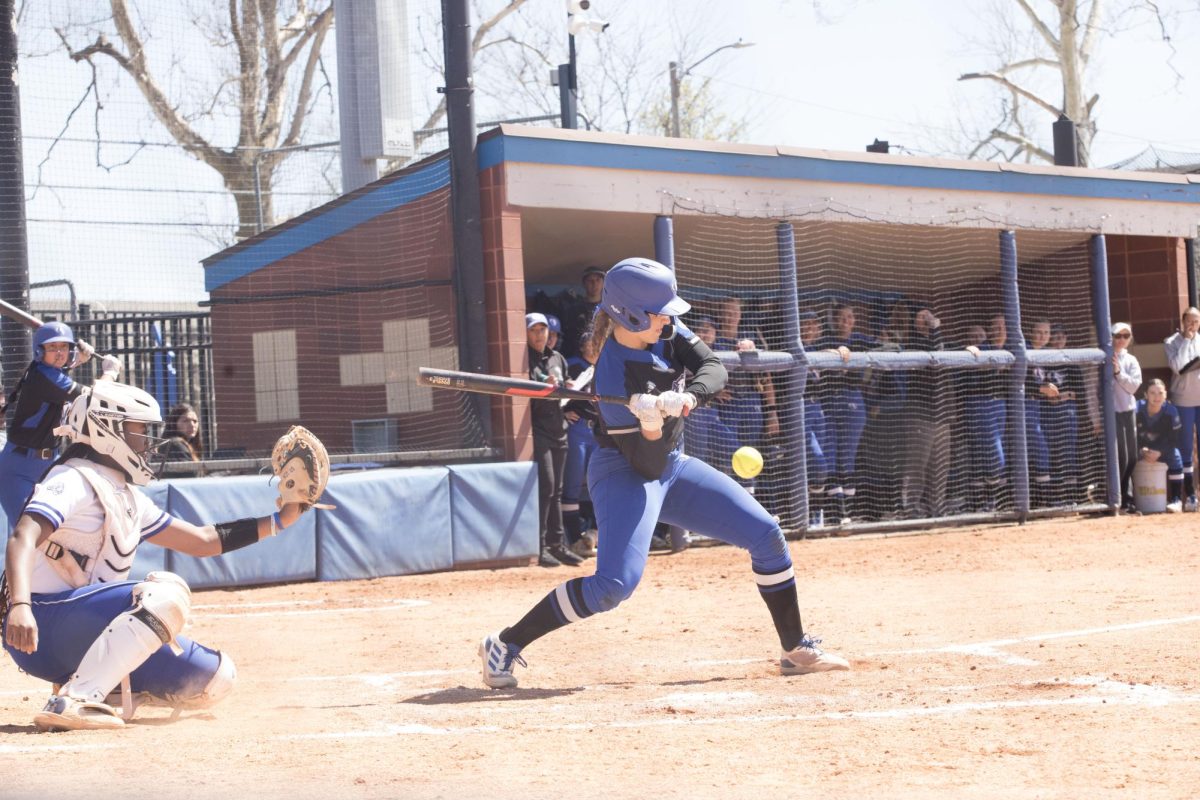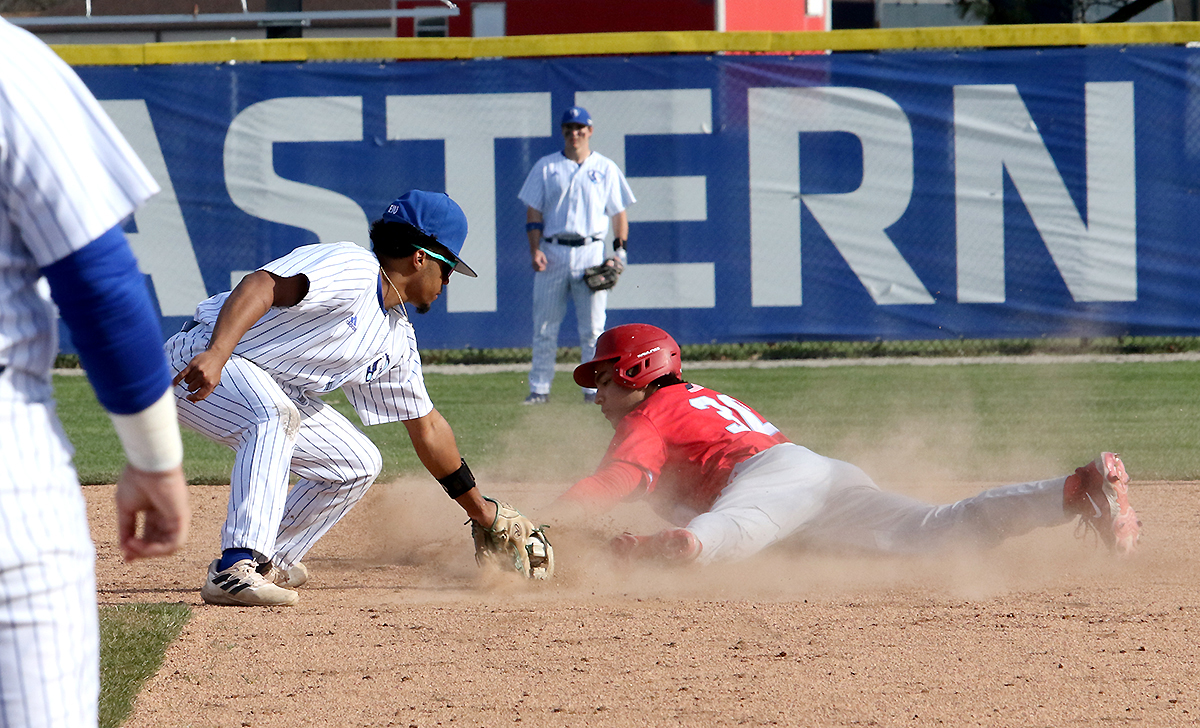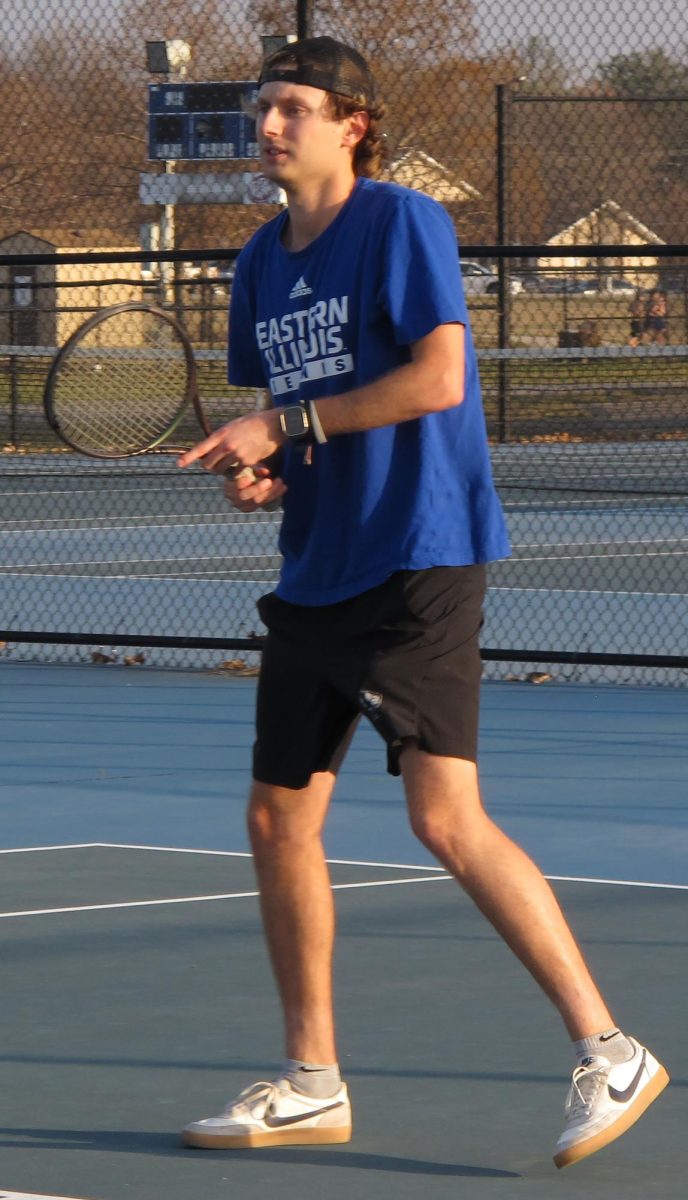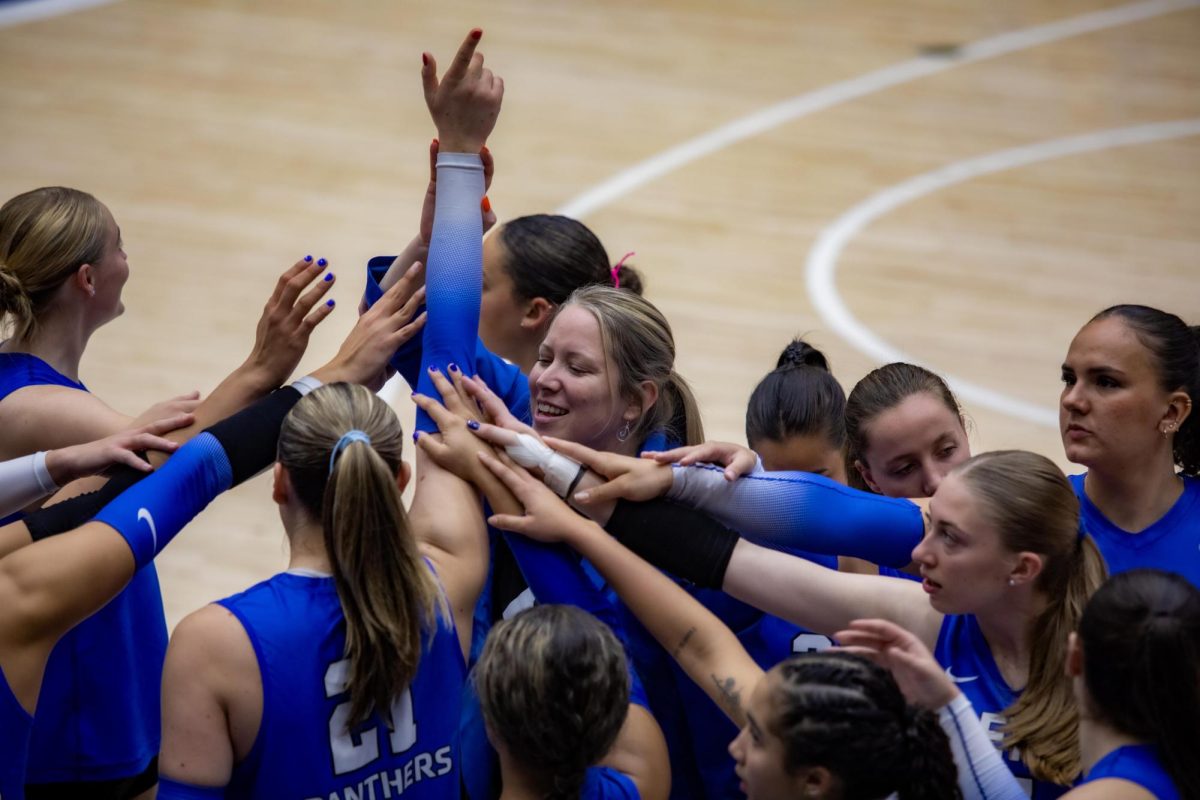Fast-paced newsrooms explained during panel
Chris Sundheim made the decision to post the Associated Press story about the 12 miners trapped at Sago Mine in West Virginia when they received word all were alive.
Sundheim, a national news editor at the Associated Press headquarters in New York City, posted the story at midnight that night in early January 2006.
While he was leaving the office around 3 a.m. EST, someone came to him and said ‘They’re all dead.’
“All the blood drained from my face at that time,” Sundheim said.
This was one of the stories presented Tuesday night in Booth Library as part of the Associated Press traveling exhibit in the library this month.
Sundheim, an Eastern alumnus, along with George Garties, the AP’s Illinois bureau chief, and Martha Irvine, an AP writer based out of the Chicago bureau, led a panel discussion titled “Always on Deadline: How the Associated Press Covers the World.”
Irvine presented multimedia slideshows, one of a serious topic about a group of New Oreleans residents who mourn the loss of residents killed since Hurricane Katrina with a moment of silence for each victim.
The other slideshow focused on a light-hearted moment at Northwestern University, involving students who need to relieve stress before the start of finals week. They gather in a residence hall, have some snacks and then all go outside and let out a loud scream for a minute or two.
Irvine said the story about the Northwestern students couldn’t have been told any better than through sound.
“In the end, we’re all story tellers,” Irvine said. “We have to find out the best way to tell the story.”
Sundheim gave a presentation of photos about the new Associated Press headquarters in New York City. Sundheim said in order to work for a news organization like the Associated Press, a journalist has to have the ability to multi-task.
He showed a photo of a fellow employee who had four computer screens in front of her, while she also had two televisions turned on.
Sundheim also pointed out features he liked about the building, like world clocks displaying the time of various cities around the United States and world.
Sundheim said television screens turned to CNN, MSNBC and other major news channels are constantly on.
AP uses the TVs to get ideas for stories and breaking news, Sundheim said.
The Internet is becoming a large part of the AP. If a large story breaks, it will put the information it has online and build off that. But on the next day, it will not run a story like the first day.
“We want to take it beyond that and get something that other people don’t have,” Sandheim said.
He gave an example of the Virginia Tech shooting. A gap in time happened during the time the shooting happened and when police told the campus.
This was the angle the AP took in the follow-up story because it was not repeating the same basic information.
The Internet and other mediums have also broadened AP’s scope. Garties said only one-third of AP’s revenue comes from print newspapers now.
“As the industry has given and diversified,” Garties said, “we have gone with that.”
-Editor in Chief Matt Daniels contributed to this report
Fast-paced newsrooms explained during panel

During the Always on Deadline panel Georges Garties, Illinois AP bureau chief, fields questions from the audience in the Booth Library. The panel was the fourth out of eight this month and a part of the exhibit entitled, Breaking News: How the Associated

